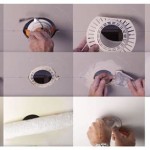Essential Aspects of Suspended Ceiling Light Covers
Suspended ceiling light covers, also known as diffuser panels or ceiling tiles, play a crucial role in modern lighting systems. These covers are designed to enhance the aesthetics and functionality of suspended ceiling lighting, providing ample illumination while concealing the unsightly aspects of electrical components. Understanding the essential aspects of suspended ceiling light covers is paramount for architects, designers, and homeowners seeking optimal lighting solutions.
Material and Durability
The material of a suspended ceiling light cover directly impacts its durability and functionality. Common materials include acrylic, polycarbonate, and metal. Acrylic, a lightweight and shatter-resistant plastic, offers high light transmission and is ideal for areas requiring diffused, uniform lighting. Polycarbonate, known for its exceptional strength and flame resistance, is often used in commercial and industrial settings. Metal covers, such as aluminum or steel, are durable and can withstand harsh environments.
Light Transmission and Diffusion
Light transmission refers to the amount of light that passes through a suspended ceiling light cover. Diffusion, on the other hand, describes how the light is distributed. Covers with high light transmission provide brighter illumination, while those with lower transmission create a more diffused and even light distribution. Designers can select covers with varying transmission rates to achieve the desired lighting effect.
Aesthetics and Design
Suspended ceiling light covers are not merely functional components; they also contribute to the overall aesthetics of a space. Covers come in various shapes, sizes, and designs, allowing for customization to complement different architectural styles. From classic square panels to modern geometric patterns, designers can choose covers that enhance the visual appeal of the ceiling.
Acoustical Properties
Certain suspended ceiling light covers possess acoustical properties, helping to reduce noise levels in a room. These covers are designed with sound-absorbing materials that absorb and dampen sound waves, creating a quieter and more comfortable environment. This aspect is particularly important in spaces such as offices, classrooms, and open-plan areas, where sound control is essential.
Maintenance and Cleaning
Maintaining suspended ceiling light covers is crucial for their longevity and optimal performance. Regular cleaning helps prevent dust accumulation, which can reduce light transmission and compromise the overall appearance of the cover. The frequency of cleaning depends on the environment and usage of the space. Some covers require periodic wiping with a soft cloth, while others may necessitate specialized cleaning methods.
Conclusion
Understanding the essential aspects of suspended ceiling light covers empowers architects, designers, and homeowners to make informed decisions when selecting these crucial lighting components. From material and durability to aesthetics, light transmission, and acoustical properties, each factor contributes to the overall functionality and ambiance of a space. By carefully considering these aspects, one can optimize suspended ceiling lighting solutions, ensuring both aesthetic appeal and enhanced illumination.

Suspended Ceiling Lighting Systems In Turkey Trio

Arrian Suspended Ceiling Led Panel 38 03 Inc Vat

Led Panel 60x60 Square Suspended Ceiling Lighting 36w Myplanetled

Suspended Ceiling Lights Linear Fixture Manufacturer

Flat Panel Ceiling Light Prismatic Acrylic True Uv Resistance

Lighting Ceilume

Genesis Clear 2x4 Light Panel Lens Covers Box Of 10 708 00

How To Easily Clean Dropped Ceiling Lighting Cover Panels Life Should Cost Less

Lighting Ceilume

Suspended Ceiling Lights The Best To Put On A
Related Posts








